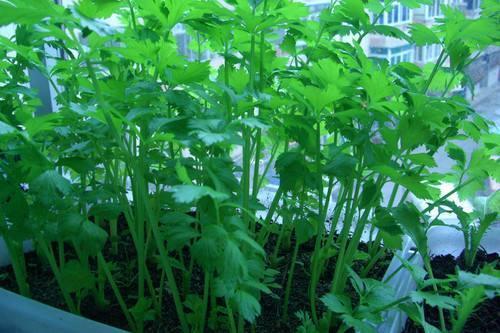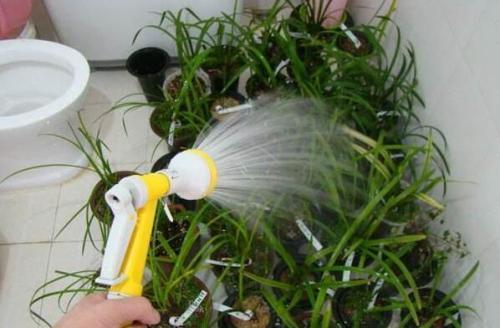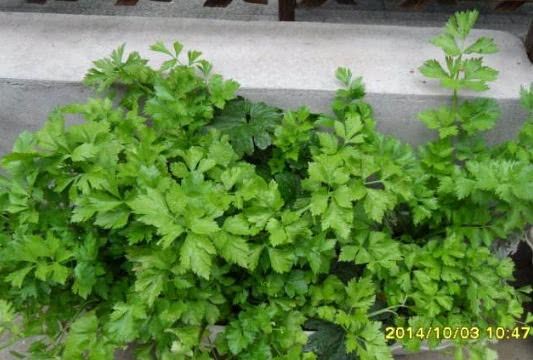The three kinds of antihypertensive vegetables under the potted plant can all be eaten healthily after picking for 2 months.

Nowadays, more and more people plant vegetables on the balcony. We all feel that potted vegetables are not only harmless and green, but also have a lot of fun in the whole maintenance process. However, this potted vegetable, there are also a lot of attention, such as which kinds are suitable for potted plants, which grow faster, or which are healthier. Now with the improvement of living standards, eat well and dress well, the three highs naturally become more and more. Especially for people with high blood pressure, there are at least two or three out of 10 people. Next, the pot stack to share with you three kinds of potted "blood pressure vegetables", it is said that these plants potted up, but very good!
1. Potted celery
This plant can be a treasure for people with high blood pressure. Many people know that eating celery to lower blood pressure is true at all. If there is no small yard at home, it is also a good decision to plant a pot of celery on the balcony. Because potted celery has two advantages worth raising it, one is that the process of potted celery can cultivate self-cultivation, which is conducive to a happy mood. Second, celery grows fast and is easy to raise, so it can be picked soon. And their own potted vegetables, not to mention pesticides, there is no residue, completely green vegetables.
How to maintain potted celery
For celery, potted plants can choose two ways: one is cutting, which is the kind of ready-made celery root, and the other is sowing. Sowing celery is OK, but it takes a little longer from sowing to mature. Maintenance of celery, daily management is relatively simple, its adaptability is relatively strong, you can use the usual special soil for growing flowers. Or homemade rotten leaf soil. Water it until it is dry and wet, just put it under the bright scattered light.
2. Potted sweet potato
Potted sweet potato, we do not eat sweet potato ha, the second is to eat its "leaves". Sweet potato leaves contain a lot of nutrients. Every 100 grams of sweet potato leaves contain 2.28 grams of protein, 16 milligrams of mineral potassium, iron, phosphorus and potassium as well as carotene. Whether it's boosting immunity or lowering blood pressure, sweet potato leaves are the best potted vegetables.
The operation of potted sweet potatoes is also very simple. It can be cultivated in either hydroponics or soil. It is suggested that flower friends can be cultivated in the soil, so that they will grow faster. If you want to cut sweet potato leaves and grow again, it is recommended to top fertilizer once a month, you can use thin cake fertilizer water or potassium dihydrogen phosphate solution spray.
3. Potted purslane
Purslane was originally a weed growing in the wild, but after it was found to have nutritional value, it was no longer a weed, but became a solid wild vegetable. It is said that the market value of this kind of wild vegetable is not low now, it costs more than ten yuan per jin. Pot Portulaca oleracea had better be raised. Because it is already growing outside, it has a strong ability to adapt to survival. The general soil and climate can be fed. The key point is that Portulaca oleracea is easy to reproduce. Generally speaking, a large pot can be produced by a single branch. Whether this dish is fried or steamed, it is of high value. Purslane contains calcium, phosphorus, iron and vitamin E, vitamin B, vitamin C and other nutrients, in addition to reducing blood pressure, it is also very helpful for the prevention and treatment of cardiovascular diseases, so it is not a loss to raise it at all.
This Portulaca oleracea is shipped in Shandong and can be trusted.
So much for the knowledge of antihypertensive dishes. Thank you for your reading!
Remember to like and share.
- Prev

The spider orchid green depends on it to irrigate and learn tips to grow twice as fast
Chlorophytum potted plant is a very worthy of maintenance of foliage plants, because it is not only green all year round, but also a good purification of indoor formaldehyde, benzene compounds and other harmful gases. As such excellent potted plants...
- Next

Plant a few pots of celery in autumn and pick it if you want to eat it. Use this method to sow seeds and grow quickly.
Celery is a vegetable we often eat, it emits a special fragrance, so there are few diseases and insect pests, friends who like to eat celery might as well plant a few pots at home, green is very pleasing to the eye, and it is very convenient to pick leaves when they want to eat.
Related
- Wuhan Hospital Iron Tree Blooming Result Was Instantly Frightened by the Gardener Master
- Which variety of camellia is the most fragrant and best? Which one do you like best?
- What is the small blue coat, the breeding methods and matters needing attention of the succulent plant
- Dormancy time and maintenance management of succulent plants during dormancy
- Minas succulent how to raise, Minas succulent plant pictures
- What are the varieties of winter succulent plants
- How to raise succulent plants in twelve rolls? let's take a look at some experience of breeding twelve rolls.
- Attention should be paid to water control for succulent plants during dormant period (winter and summer)
- Watering experience of twelve rolls of succulent plants
- Techniques for fertilizing succulent plants. An article will let you know how to fertilize succulent plants.

